Gipsy Moth IV und Chichester, die schnellste Weltumrundung eines kleinen Segelbootes
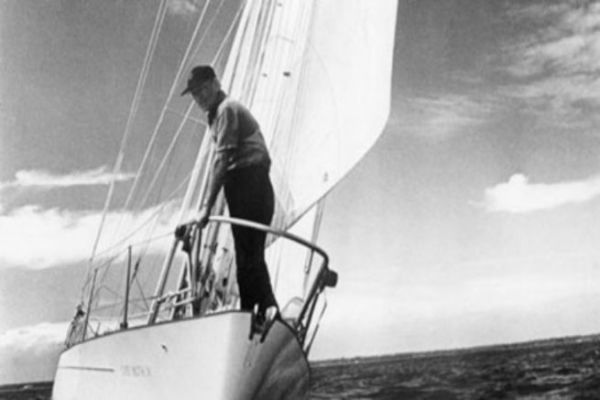

Als der wagemutige Sir Francis Chichester 1967 an Bord der Gipsy Moth IV zu einem transatlantischen Soloabenteuer aufbrach, war er inspiriert von den Erfolgen der Klipper des 19. Jahrhunderts inspiriert. Sein Abenteuer wird Tausende von Menschen beeindrucken.
Ein Segelboot bauen, um den Klipper-Rekord zu brechen
Nach transatlantischen Einhandrennen in den Jahren 1960 und 1964 stellte sich Sir Francis Chichester, inspiriert von den Klippern des 19. Jahrhunderts, der Herausforderung, deren Rekorde zu brechen. Die Klipper, die Tee transportierten, benötigten durchschnittlich 123 Tage für die Strecke nach Ostindien. Chichester setzte sich das Ziel, 100 Tage zu segeln.
1965 gab er bei Camper and Nicholsons in Gosport den Bau der Gipsy Moth IV nach den Plänen von John Illingworth und Angus Primrose in Auftrag. Die Gypsy Moth IV wurde im März 1966 mit der Werftnummer 916 auf den Markt gebracht und hatte eine Länge von 38 Fuß (11,73 m) bis zur Wasserlinie und 16 m über alles. Sie wurde mit einem kaltgeformten Rumpf aus honduranischem Mahagoni gebaut. Die anfängliche Verdrängung betrug 10,4 Tonnen, die mit einer zusätzlichen Tonne Ballast beschwert wurden, um einem unzureichenden aufrichtenden Drehmoment entgegenzuwirken. Sie ist als Ketsch getakelt, hat eine Segelfläche von 79,3 m2 und einen Spinnaker von 140 m2. Sie ist für Einhandsegler ausgerüstet und verfügt über Innovationen wie ein automatisches Steuerungssystem, das auf der Pinne basiert.
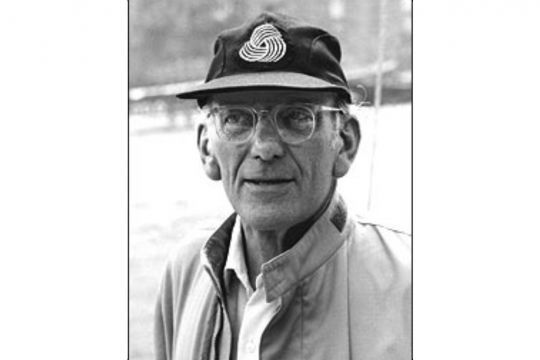
Ein Abenteuer , das von mehreren Abenteuern geprägt ist
Am 27. August 1966 verließ der 64-jährige britische Segler um 11 Uhr morgens Plymouth in Richtung Sydney. Am 15. November, als er sich noch 2300 Meilen von der Hauptstadt von New South Wales entfernt befand, fiel sein Autopilot aus. Nach 107 Tagen und 14.113 zurückgelegten Meilen erreichte der Segler am 12. Dezember Sydney.
Während des Zwischenstopps wandte sich Sir Chichester an den Konstrukteur von Segelbooten für den America's Cup , Warwick Hood, der dem Kiel des Schiffes ein Teil hinzufügte, um die Stabilität zu verbessern - allerdings ohne Erfolg.
Am 29. Januar 1967 stach er wieder in See , passierte Kap Hoorn am 22. März und kehrte am 28. Mai nach Plymouth zurück, 119 Tage nach seiner Abreise aus Australien und nach 15 517 zurückgelegten Meilen. Insgesamt hatte der Seemann in nur 274 Tagen mehr als 28 500 Meilen zurückgelegt, davon 226 Tage tatsächlich auf See . Der Seemann hatte eine 140°-Kenterung zu verzeichnen, die er anhand der Markierung einer Weinflasche auf dem Kabinendach errechnete, 15 m hohe Wellen und Böen von über 60 Knoten .
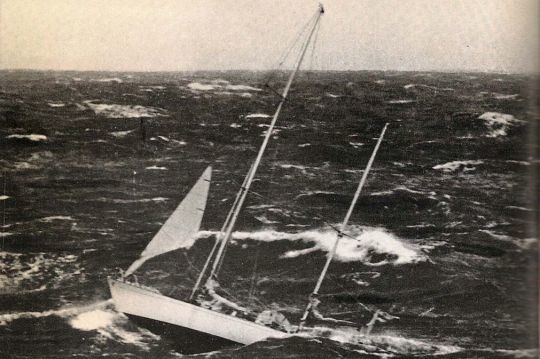
Die Umrundung von Kap Hoorn als prägende Erinnerung
Eine der bemerkenswertesten Anekdoten seiner Reise war die Umrundung von Kap Hoorn auf einem 16 Meter langen Segelboot. Francis Chicester schrieb in dem Buch "Gipsy Moth Circles the World": "Jahrelang ging mir das nicht aus dem Kopf. Es hat mir nicht nur Angst gemacht, es hat mir Angst eingejagt, sondern ich glaube, man kann mit Fug und Recht sagen, dass es mich in Angst und Schrecken versetzt hat. Ich habe mir lange Zeit eingeredet, dass jeder, der versucht, Horn auf einer kleinen Yacht zu umsegeln, verrückt sein muss. Von den acht Yachten, die ich kannte, weil sie es versucht hatten, waren sechs gekentert oder saniert, während oder nach der Passage. Ich hasse es, Angst zu haben, aber noch mehr hasse ich es, von der Angst daran gehindert zu werden. Das Horn hatte eine furchterregende Faszination und bot eine der größten Herausforderungen der Welt"
Rekorde en masse
Die Gipsy Moth IV schrieb 1967 Geschichte und holte sich gleich mehrere Rekorde:
- Die schnellste Umrundung, die je von einem kleinen Schiff durchgeführt wurde,
- Die längste Nonstop-Navigation, die je von einem kleinen Segelschiff durchgeführt wurde, 15.000 Meilen,
- Der Rekord für ein einwöchiges Einhandrennen über 1 000 Meilen, der zweimal erreicht wurde,
- Der Geschwindigkeitsrekord im Alleingang, 1 400 Meilen in 8 Tagen.

Ein Liebesentzug für Gipsy Moth IV
Sir Francis' Reise inspirierte Tausende von Menschen, und mehr als 250.000 Menschen nahmen an seiner Rückkehr nach Plymouth am 28. Mai 1967 teil. Anfang Juli 1967 kehrte er mit seiner Frau, seinem Sohn und dem Kommandanten Errol Bruce auf die Themse zurück und wurde am 7. Juli in Greenwich von der Königin zum Ritter geschlagen.
Nach seiner Rückkehr zeigte er jedoch wenig Respekt für das Boot , mit dem er seine Weltumsegelung absolviert hatte. Im Life Magazine schrieb er "Jetzt, wo ich fertig bin, weiß ich nicht, was mit Gipsy Moth IV passieren wird. Ich besitze nur das Heck, während mein Cousin zwei Drittel davon besitzt. Meinen Anteil würde ich an jedem beliebigen Tag verkaufen. Es wäre besser, wenn etwa ein Drittel abgesägt würde. Das Boot war zu groß für mich. Gipsy Moth IV hat keinen ideellen Wert für mich. Es ist launisch und schwierig und braucht eine dreiköpfige Besatzung - einen Mann zum Navigieren, einen Elefanten, der das Ruder bewegt, und einen 1,1 m großen Schimpansen mit 2,4 m langen Armen, der sich unter ihm bewegt und einen Teil der Ausrüstung handhabt."
Chichester starb am 26. August 1972 im Alter von 71 Jahren.
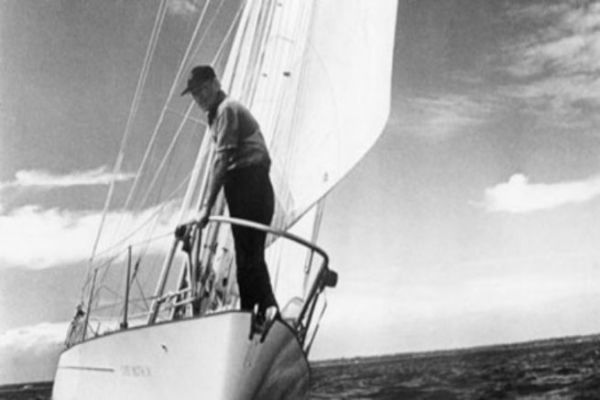
Practical Boat Owner
- Digital edition

Sailing the legendary 32ft cruiser, Damien from the Arctic Circle to Antarctica
- Marina Guedes
- August 20, 2024
Between 1969 and 1973, Jérôme Poncet and Gérard Janichon sailed their 32ft cutter Damien from Spitsbergen to Antarctica via the Amazon River. Marina Guedes looks back at their far-flung voyage

Damien returning to La Rochelle on 22 September 1973 after sailing 55,000 miles. Credit: Jérôme Poncet Credit: Jérôme Poncet
Typically a circumnavigation around the world from Europe is westbound, with many cruisers choosing to cross the Atlantic to the Caribbean and then through the Panama Canal to the Pacific.
Those looking for a more challenging option usually follow in the wake of Sir Robin Knox-Johnston and Bernard Moitessier, rounding the Great Capes along the way.
But neither of these routes was chosen by school friends Jérôme Poncet and Gérard Janichon during their epic adventure aboard Damien .
The trip on the 32ft wooden cutter – which is now a historic monument based at the La Rochelle Maritime Museum – included places that a small sailboat had never reached before.
From 1969 to 1973 Jérôme and Gérard went as far north as the Norwegian Arctic (at Latitude 80°N) to its extreme opposite, the Antarctic Peninsula (at 68°S), visiting remote places such as the Amazon and some of the sub-Antarctic islands along the way.

Gérard Janichon (left) and Jérôme Poncet were just 22 when they left France aboard Damien . Credit: Jérôme Poncet
These were the days before chart plotters , AIS and GPS. Neither High nor Very High Frequency (VHF) radios were carried on board.
Instead, Jérôme and Gérard used celestial navigation , utilising paper charts, compasses, a wrist watch and a sextant bought for £20 from a second-hand shop in London.
“We sailed in peace,” recalled Jérôme 50 years later from his home in the Falkland Islands.
As for keeping friends and family updated, they sent messages via the French Embassies or took advantage of a method nearly extinct in the 21st Century: they wrote a letter and sent it via the post.
For most high school students, once exams are out of the way, the focus is on the next step towards a career.
In France, Damien ’s crew had one main concern, which had nothing to do with academic doubts; their goal in 1965 was to start their voyage within five years (they left in 1969 when they were both 22 years old).

Da mien was designed by British naval architect Robert Tucker who also penned one of the first trailer-sailers, the Silhouette. Credit: Jérôme Poncet
But first, they needed a boat.
English naval architect Robert Tucker was chosen and commissioned in 1967 to design Damien , which was cold-moulded.
The boat had to accommodate three people and cope with occasional harsh seas and bad weather expected while sailing further south.
Jérôme´s idea was inspired by a previous project of Jean-Sebastien made for the Lederlin brothers, back in Grenoble.
The Nautic-Saintonge shipyard in Saujon built the bare hull out of four 5mm layers of laminated mahogany; Damien was designed to be robust but not heavy, and when finished the boat weighed five tons.
The rest of the work – rigging , building the interior, and painting – was completed by Jérôme and Gérard due to their limited finances.
Many people also offered their services free of charge, so deeply touched were they by the spirit of adventure echoed by Jérôme, Gérard and Jean-François, the last mate to join.
As their departure date neared, Damien ’s crew faced bureaucratic difficulties; the lack of watertight bulkheads and a liferaft meant they were delayed until these matters were resolved.
On 29 May 1969, the La Rochelle port authority gave the boat the green light, although stressed that Damien should not go beyond 30 miles of the coast.
It didn’t stop them.
Damien heads to high latitudes
Arrival at the Norwegian city of Bergen happened after the first storm.
Damien coped well in the heavy weather, so they continued north to Spitsbergen in Svalbard, sailing through Lofoten and Tromsø.
Everyone was impressed that such a small boat was going so far north.
They aimed for Longyearbyen fjord, but constant fog and compass malfunction resulted in a course deviation further north, at 80°.

A plexiglass dome meant the crew could helm protected from the elements. Credit: Jérôme Poncet
On the way down, Damien successfully went through Forlandsundet Strait, between the west coast of Spitsbergen and Prince Karl Forland Island; good visibility and Damien ’s draught of 1.45m/4.7ft made the narrow 100-mile passage possible.
To cope with the cold of the Arctic Circle, Damien ’s crew wore all of the winter clothes they had on board and drank coffee, tea, whisky, rum and ate apple pies.
A stove was eventually installed two years later, in the Argentine port of Ushuaia, before sailing into the Southern Ocean; this also solved Damien ’s condensation problem.
They also fitted a dome made of Plexiglass above the companionway, so they could steer from inside the boat, sheltered from the elements.
Iceland then around Greenland
Although quick, the stop in Iceland was relaxing for Damien ’s crew, with swims in cold and hot pools, a popular attraction of this volcanic island.
They also obtained accurate navigation information for Greenland and Canada’s east coast.
The dense pack ice near Greenland prevented them from going ashore. Still, they enjoyed special moments near the world’s biggest island, sailing close to glaciers, icebergs and watching memorable northern light ‘performances’.
The early September crossing from Greenland to Canada was marked by constant low pressure and their first knockdown, near Cape Farewell.

Dodging icebergs. Credit: Jérôme Poncet
Under sunshine, and 1,500 miles later, Cape Bonavista was sighted. They made landfall at St John’s in the Canadian province of Newfoundland.
But their arrival was not without incident.
While Jérôme, Gérard and Jean-François were ashore intruders broke into Damien , stealing both the radio and tape recorder.
These were swiftly returned after the trio’s voyage from Greenland was covered by the local media; they also received presents of food from sympathetic residents.

Hard times on board Damien
Damien’s crew dearly remember the days spent cruising the East Coast of the United States.
From Marblehead in Massachusetts to New York, Delaware, Chesapeake Bay, Norfolk and finally Morehead City, there were many stops before their worst leg: the West Indies.
Reading Gérard’s book, Damien, 55 Thousand Miles Around the World , it’s clear this part of their voyage tested the crew physically and psychologically.
In the US Virgin Islands, Jérôme suffered from kidney stones and then an infection which left him hospitalised in Saint Croix for three months; he eventually had to have one of his kidneys removed.
Keeping fouling growth on Damien ’s hull at bay was a constant battle, and while at anchor the cutter was struck by a stolen power boat being driven by a drunk skipper.
To add to the wounds, Jean-François packed up and left.

Keeping on top of growth on the hull of Damien and the tender was an ongoing battle in the Caribbean. Credit: Jérôme Poncet
As Gérard summed up, they had “physical, technical and psychological accidents.”
“Being just the two, however, contributed to a solid and ever-intact friendship among us”, declared Poncet.
Over the years, the pair took on other non-human crew, including cats, monkeys, chickens and even coconut crabs.
From Martinique, Damien reached the Salvation Islands in French Guiana, then Kourou.
On the mainland, they stayed longer than planned due to the kind support from new friends who worked at the National Centre of Space Studies.
“Kourou was an important boost in our circumnavigation”, wrote Gérard.
Damien and crew were then more than ready for the upcoming moment they’d wished for, for so long… the Amazon rainforest.
The months in the Amazon were meaningful for both of them, especially visiting remote villages having come up through the State of Amapá to continue towards Manaus; 1,000 miles sailing in freshwater.
Close to the city of Oriximiná in the Para state, they found a calm spot by Sapucuá Lake which was “a green paradise” for them.
Anchored at the protected spot, they took part in the daily life of the locals;
Gérard became a ‘bush doctor’ providing medical care with the first aid kits available on Damien .
Decades later, he wrote about that experience in another book, Atalaya, one season in the Amazon.
In 2021, it was republished as The Initiation. “It was a simple, grandiose sharing of life. An experience that has accompanied my entire life, even today”, said Gérard.

Damien arrives in Cape Town under jury rig. Credit: Jérôme Poncet
Back on salt water, they sailed to Fortaleza, Salvador and Rio de Janeiro.
A postcard depicting an aerial view of Guanabara’s Bay was all they used to navigate their approach to Brazil´s second-biggest city.
From there, Damien continued south where, according to Jérôme, “their life would finally begin.”
After Argentina, Damien and her crew were blessed by the weather gods with calm seas and good conditions, enabling them to round Cape Horn via an untraditional route, from east to west.
They went on towards Ushuaia before heading east to the higher latitudes.
“In two years, it was the most beautiful achievement”, wrote Gérard about their epic approach to South America’s southernmost tip.
The toughest moments were on the way to the sub-Antarctic island of South Georgia, in the last days of March 1971.
In confused seas and winds gusting 60-70 knots, Damien capsized three times, with both Jérôme and Gérard trapped down below for several minutes.
On the final time, the boat was dismasted, although the mast was salvaged.
The pair used the wooden spinnaker pole to set up a jury rig and sailed Damien to the port of Grytviken, where the staff of the British Antarctic Survey welcomed them.

Dismasted in South Georgia, Gérard and Jérôme used their wooden spinnaker pole to set up a jury rig to sail to Grytviken. Credit: Jérôme Poncet
In South Georgia, Jérôme and Gérard installed the original salvaged aluminium mast, albeit shorter, and made other repairs before leaving for Cape Town.
A few more knockdowns and 3,000 miles later, Damien limped into the South African city, again under jury rig.
Their priority on arrival was to ship a new aluminium mast from Europe and to prepare the boat for Antarctica.
They headed south again in December 1971, visiting the remote islands of Crozet, Kergulelen (known as the Desolation Islands), Heard and Macquarie, but bad weather, ice and their compass being affected by magnetic disturbances meant cutting short their voyage and sailing to Australia, New Caledonia, Fiji, the Cook Islands and French Polynesia.
In Tahiti, they caught up with Bernard Moitessier, who they greatly admired.
“Our trip would have not been complete if we had missed this meeting”, said Gérard.
Damien in Antarctica, at last
The second longest leg of the entire voyage was from Tahiti to the Antarctic Peninsula, the 4,500-mile trip being completed in 37 days when they made landfall at Adelaide Island; it was the first time such a small sailing boat had moored this far south in the Antarctic Circle (Solo sailor David Lewis on Ice Bird arrived several weeks earlier, but did not go as far south as Jérôme and Gérard on Damien ).

A jury rig allowed Damien to be sailed to South Georgia for repairs. Credit: Jérôme Poncet
Despite the hardships and testing conditions of the Southern Ocean, it was always Jérôme and Gérard’s favourite place to sail; even after so many difficulties, they never gave up on their dream to sail there.
“The southern world is still a free place”, notes Gérard.
After visiting the South Shetland archipelago, Damien continued north for South Georgia, where Jérôme and Gérard rekindled friendships from a year before.
By May 1973, Damien was in Argentina and then onwards to Brazil; the circle was almost complete.
Future plans
Throughout the voyage, Jérôme and Gérard had already begun making plans to build two bigger vessels, strong enough to winter in the Polar regions.
Thus, their sadness on returning to La Rochelle, on 22 September 1973, was eased by the excitement of starting another new chapter.
France would be just another leg before they could return to living at sea, each on his own boat – Jérôme and his wife, Sally, on Damien II and Gérard and his wife, Jacquie on Damien 3 (later renamed Kotick ).

Jérôme Poncet on Damien . His love of sailing the Southern Ocean led him to settle in the Falkland Islands. Credit: Jérôme Poncet
Both were identical steel schooners with a hull length of 46ft 4in/14.14m and a lifting keel .
Although frequently seen as heroes, Jérôme and Gérard´s goal was never fame, being an example for others or breaking any world record.
Their adventure was not an escape either.
Damien meant more than just a yacht; the boat was a companion which allowed them a lifestyle they most appreciated: total freedom.
Where is Damien today?
In September 2002, following a request by Gérard Janichon, Damien was classified as a Historic Monument in France.
Years later, the boat was restored and put on display at the Musée Maritime La Rochelle (La Rochelle Maritime Museum), alongside Moitessier’s Joshua .
No booking is necessary to visit unless a group is large. Members of the Association des Amis du Musée Maritime de La Rochelle (Friends of the Maritime Museum of La Rochelle Association) can still sail on Damien and Joshua , usually between April and the beginning of November.

Gérard Janichon was pivotal in making sure Damien was restored and preserved. Credit: Xavier Leoty/Getty
The former president of the association, Marie Guélain, said that when Gérard discovered Damien languishing in La Rochelle, the boat was a wreck.
“He asked a friend to buy him, and have him restored by the La Rochelle Maritime Museum, but there was no money. He then launched a crowdfunding campaign and the association was required to help because of its commitment and skills to maintaining Joshua and also restoring old wooden dinghies.”
The job was not an easy one.
“After estimates from shipyards, maritime consultants’ advice, and availability of volunteers-members, the association benefited from funding from the Ministry of Culture, the department and the city. Later, two private sponsors enabled the work to be completed. Gérard validated all the stages of the restoration. The association’s objective is to promote Damien’s philosophy among young people: adventures, exchanges and respect,” said Guélain.

Jérôme Poncet still lives in the Falkland Islands, where he sails his motor-sailer Golden Fleece. Credit: Steven J. Kazlowski/Alamy
Following seven years of work, Damien was relaunched on 18 September 2019; Jérôme Poncet and Gérard Janichon were both on board for the inaugural sail.
“ Damien was not a boat, but like a twin of each one of us, our extension,” explained Gérard.
“My daughter, Lucie, was also with us that day. When I handed her the tiller, so that she could discover the ‘ Damien sensation’, I wanted to cry. It was very moving, and the transmission was successful. The association, who dedicated themselves to restoring the boat, did a fantastic job.”
Further reading
- Originally written in French, Damien, 55 Thousand Miles Around the World by Gérard Janichon (Transboreal, 2010) has been translated into Portuguese, Polish and Italian… but never English.
- In 2022, it was published as a graphic novel under the title Damien, L’empreinte du Vent (Glénat – Vents d’Ouest, 2022)
- A film, Damien Around the World , is available in French and English, part of the Collection Adventures Maritimes, (Fac Télévisions, Equator Éditions, 2003)

Florentino Das: a shoestring voyage of adventure across the Pacific in a 24ft boat
Richard King and Serafin Colmenares Jr. look back at the remarkable Pacific voyage of Florentino Das in his 24ft home-built…

Ann Davison: transatlantic first
Ann Davison became the first woman to sail across the Atlantic solo when she arrived in New York in November…
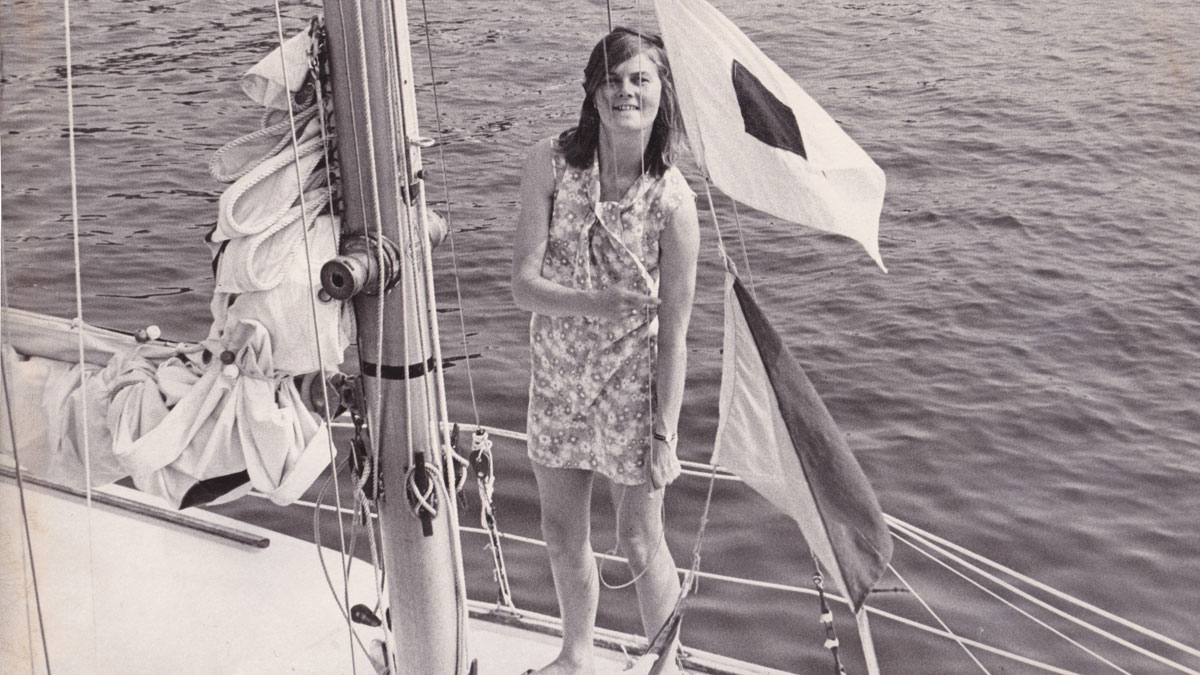
The pioneering sailor you’ve probably never heard of: Nicolette Milnes Walker
Nicolette Milnes Walker was the first woman to sail solo and non-stop from the UK to the USA. Julia Jones…

How to prepare a small boat for a big offshore sailing adventure: Top tips from Jester Challenge sailors
The art of sailing a small boat single-handed for long periods has been perfected by Jester Challenge sailors. Jake Kavanagh…
Did you enjoy reading Sailing the legendary 32ft cruiser, Damien from the Arctic Circle to Antarctica?
A subscription to Practical Boat Owner magazine costs around 40% less than the cover price .
Print and digital editions are available through Magazines Direct – where you can also find the latest deals .
PBO is packed with information to help you get the most from boat ownership – whether sail or power.
- Take your DIY skills to the next level with trusted advice on boat maintenance and repairs
- Impartial in-depth gear reviews
- Practical cruising tips for making the most of your time afloat
Follow us on Facebook , Instagram, TikTok and Twitter
